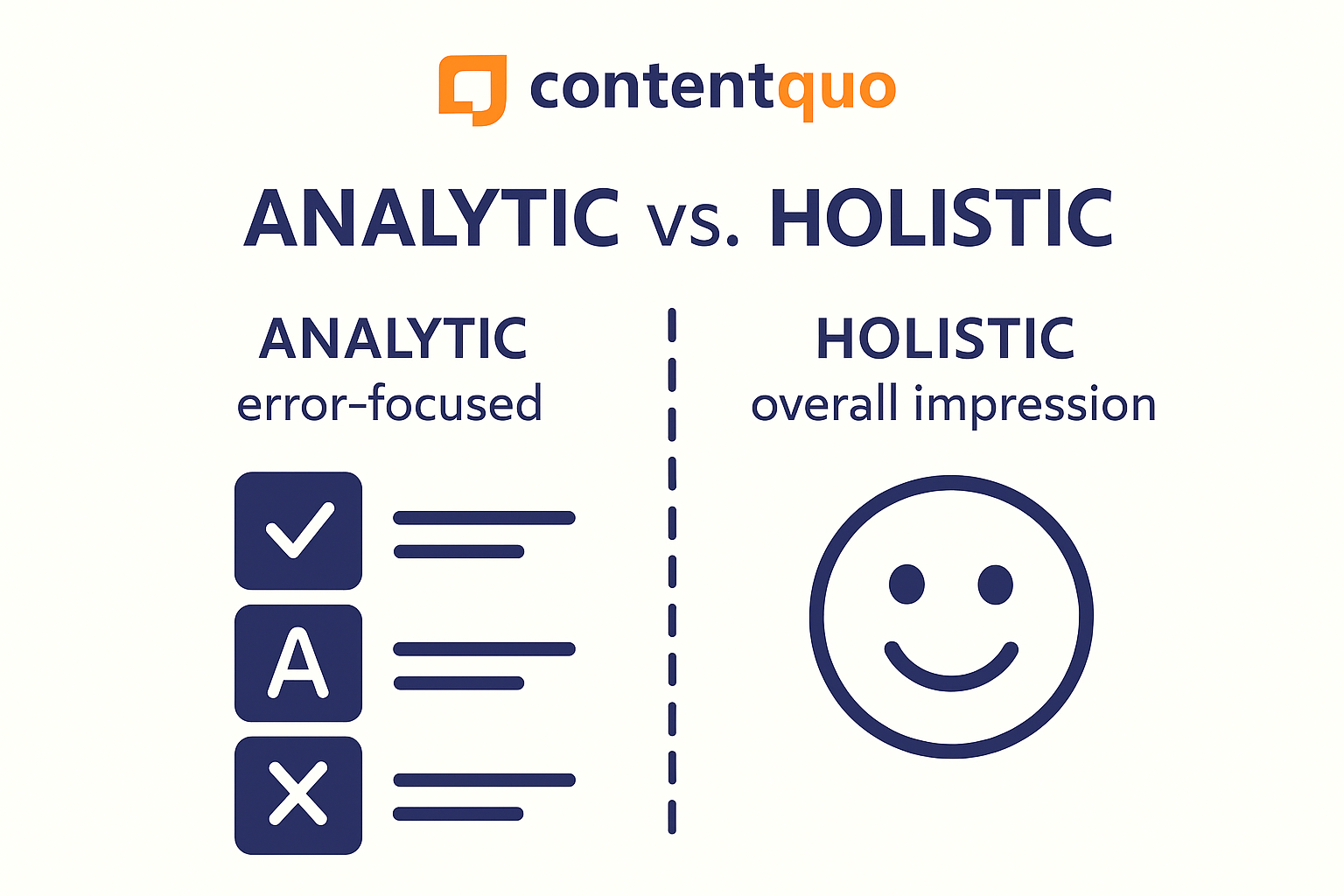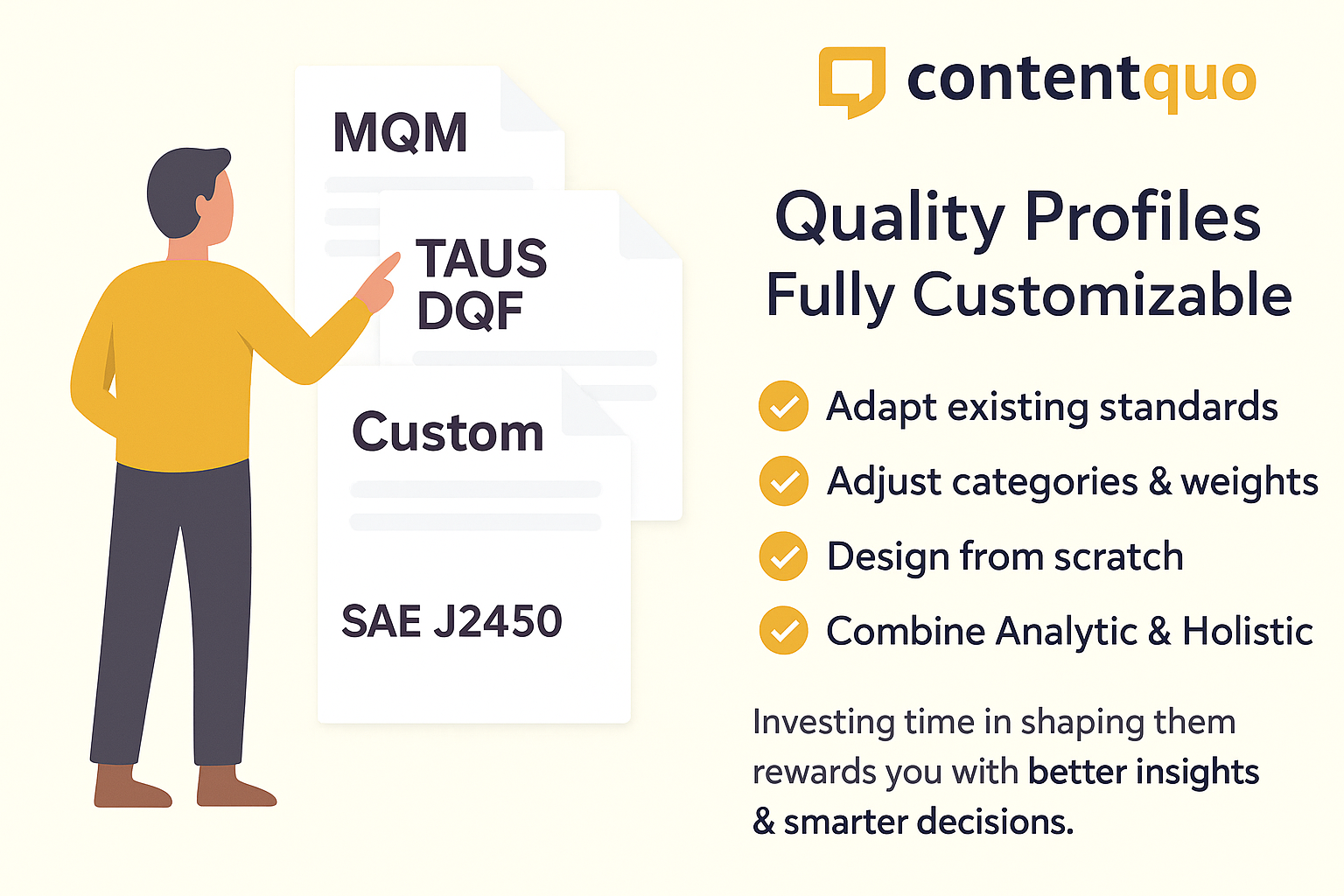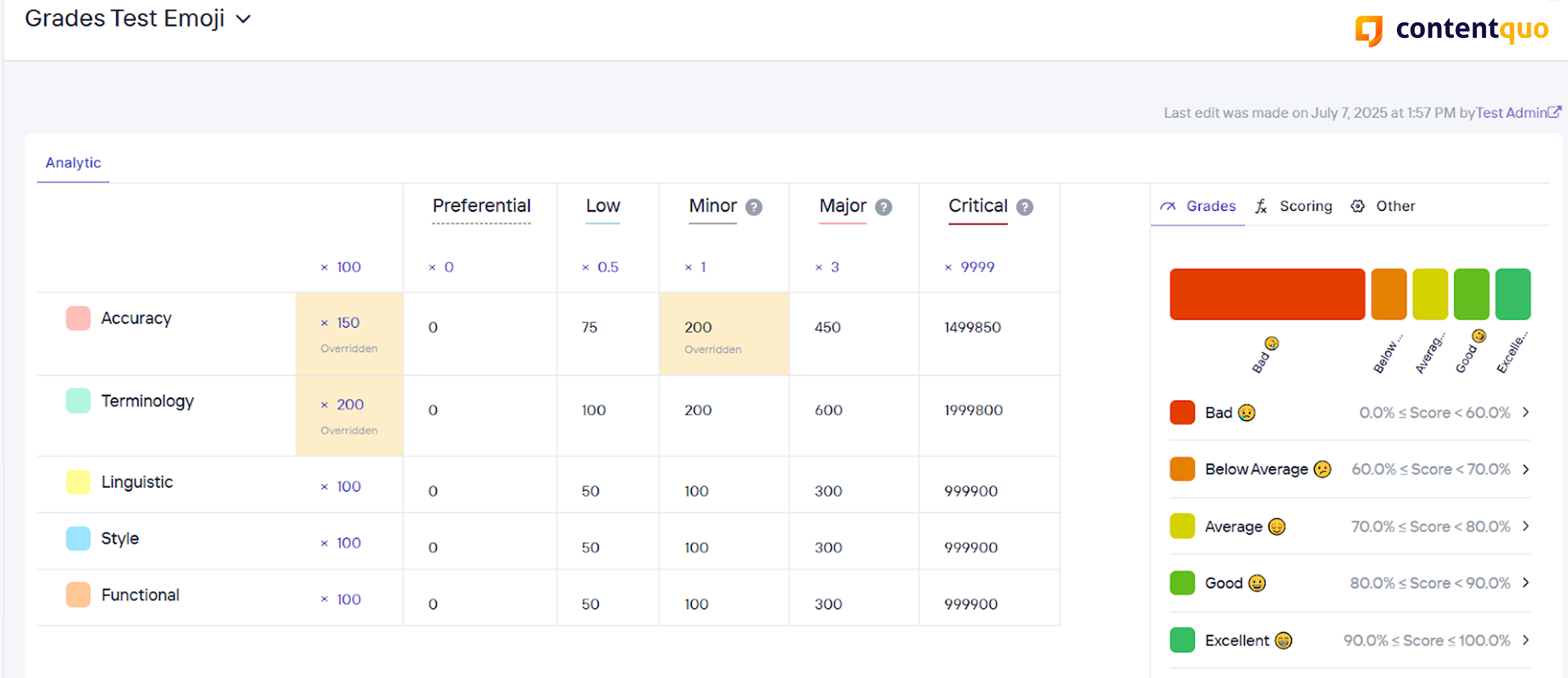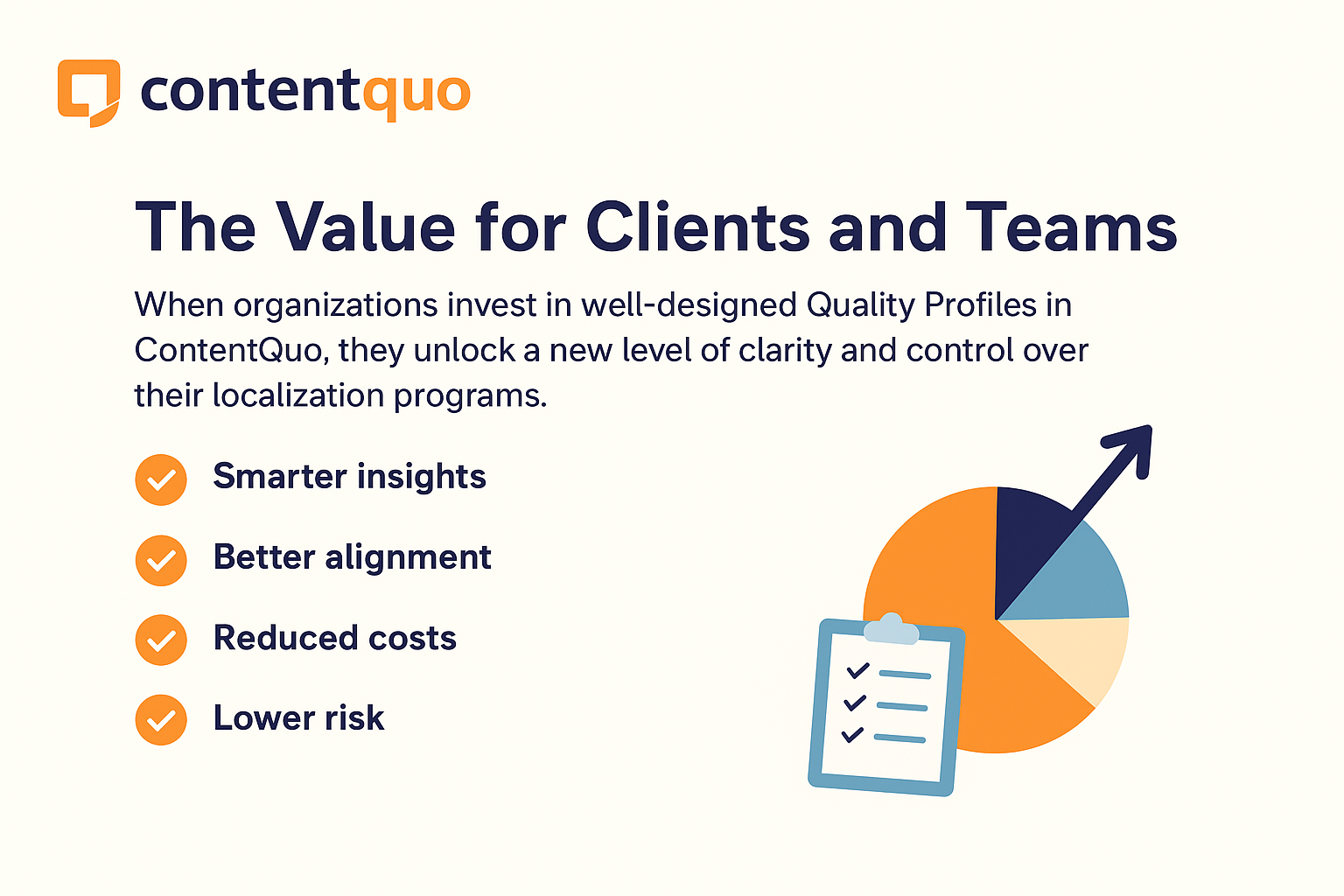 book a demo
book a demo
 book a demo
book a demo


This article is for Localization Quality Managers, Vendor Managers, and Project Managers, and really for anyone working in localization.
Even if quality isn’t your day-to-day, you’ve likely encountered it through a scorecard, error schema, or a “quality matrix", "quality profile”, or even "error taxonomy" based on industry standards. If you’ve ever wondered how these standards fit together, why they differ, or how to tailor them to your own reality, you’re in the right place.

Measuring translation quality has always been one of the biggest challenges in the localization industry. What counts as “quality” is not universal: different industries, content types, and clients value different aspects of translation. A medical device company may demand absolute accuracy in terminology to meet regulatory compliance, while a gaming publisher may prioritize style and fluency to keep players engaged.
To tackle this complexity, the industry has developed several standards and frameworks for translation quality evaluation. These provide structured approaches to categorizing errors, assigning severity, and judging the overall quality of a translation. By adopting such standards, organizations can achieve consistency, transparency, and comparability across projects, vendors, and markets.
ContentQuo’s Quality Profiles are built on well-established standards, making it possible for organizations to align with global best practices while retaining full flexibility.
Each of these standards has strengths depending on the context. But no single model is a “one-size-fits-all” solution, which is where ContentQuo comes in.

To reflect the diverse needs of localization teams, ContentQuo supports two main approaches to quality evaluation:
The analytic approach is the right choice when precision matters most, for example, in regulated industries like life sciences, finance, or automotive, where detailed error data can directly impact compliance and risk management.
Both approaches can be combined: for example, analytic scoring for critical projects and holistic checks for fast-moving, high-volume content.

In ContentQuo, industry standards come to life through Quality Profiles. A Quality Profile is a flexible evaluation model that defines how translations are assessed, what categories matter, and how results are scored.
A well-crafted Quality Profile ensures evaluations are:
Instead of forcing you to choose between rigid compliance and practical usability, ContentQuo empowers you to adapt, combine, and customize standards into frameworks that truly work for your organization.
While standards provide a solid foundation, every localization program has its own priorities and risk profile. Consider these examples:
That’s why ContentQuo makes it simple to customize Quality Profiles:
This flexibility ensures your evaluations are not only globally benchmarked but also tailored to your reality.

And if you want your LQA process to feel more engaging and friendly, ContentQuo even lets you design Quality Profiles with emojis. The visual effect can transform how reviewers perceive scores, making them less strict but still informative, and creating a more visual, intuitive experience that keeps assessments effective without losing the human touch.
By investing in well-crafted Quality Profiles in ContentQuo, organizations gain greater clarity and control over their localization programs. The benefits are tangible across every stage of the workflow:

In short, ContentQuo’s Quality Profiles give you the credibility of global standards, the flexibility to adapt them, and the tools to transform quality data into confident decisions.
Translation quality evaluation doesn’t have to be a trade-off between compliance and flexibility, or between precision and speed. With ContentQuo, you can have it all.
By combining the power of industry standards (MQM, LISA, TAUS DQF, SAE J2450) with both analytic and holistic approaches, and by offering full customization options, ContentQuo enables localization teams to design quality frameworks that are relevant, transparent, and actionable.

The result? Quality assessments that deliver real value, helping you improve vendor performance, reduce risk, and build stronger trust with clients and stakeholders.